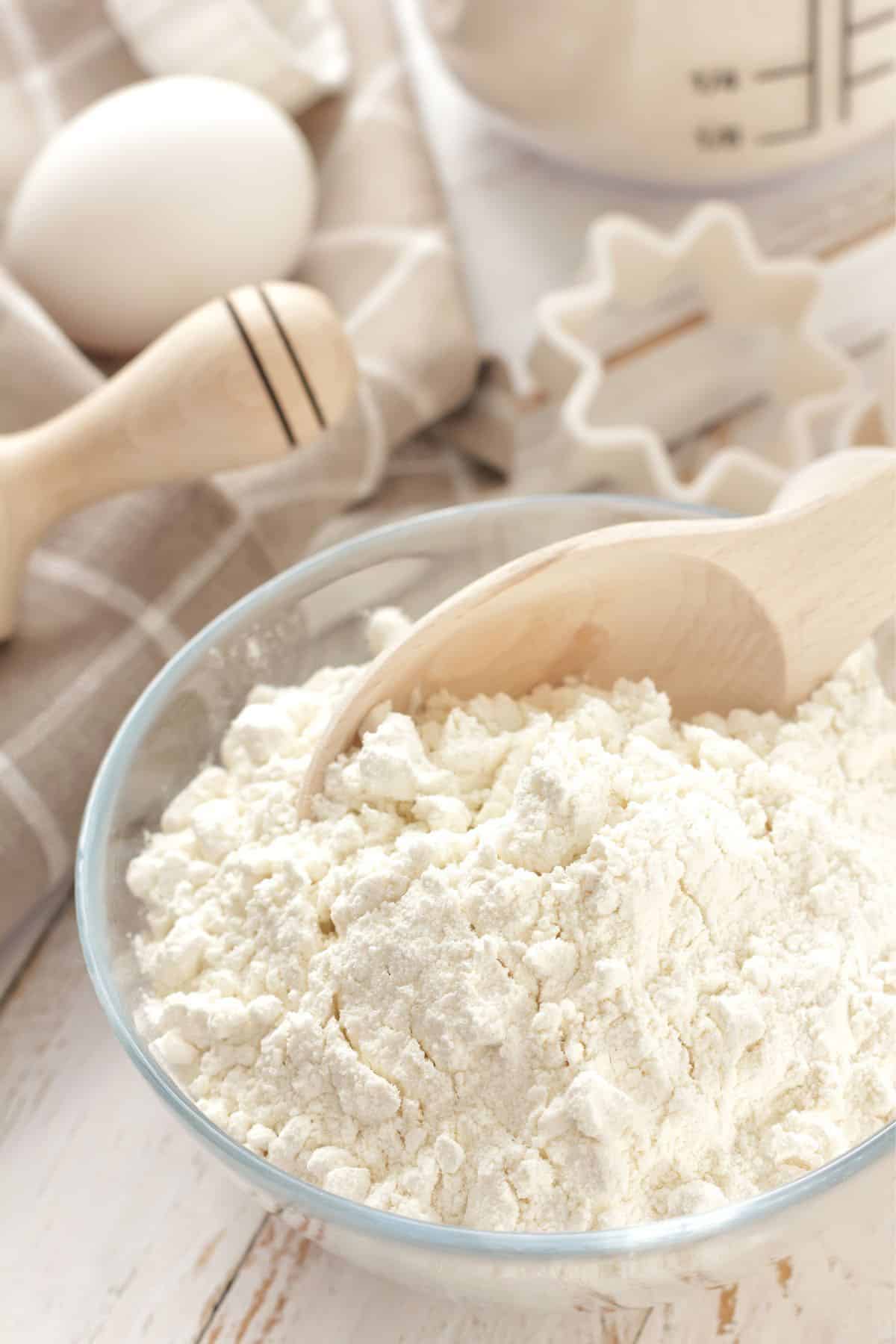Is Plain Flour All Purpose Flour? Unveiling the Baking Mysteries for Parents
Hello there, amazing parents who double as home bakers! Have you ever been in the middle of prepping for those chewy chocolate chip cookies or your family’s favorite fluffy pancakes, only to pause at the type of flour called for in your recipe? Worry not! We’re here to answer the common kitchen query: “Is plain flour all purpose flour?” Let’s sift through the flour facts together and make sure you have all the info you need to continue making those scrumptious treats!
Understanding the Flour Fundamentals
Before we dive into the nitty-gritty of plain and all-purpose flours, let’s get grounded in some flour basics. Flour is the cornerstone of many recipes – from breads to cakes to roux for thickening sauces. It provides structure, texture, and, in many cases, flavor. But not all flours are created equal, and understanding their differences is key to baking success!
What is Plain Flour?
‘Plain flour’ is the term commonly used in the UK and some Commonwealth countries, and it’s equivalent to what many in the US know as ‘all-purpose flour.’ Plain flour is a wheat flour with a moderate protein content that strikes a balance between fluffiness and elasticity, making it incredibly versatile.
The Deal with All-Purpose Flour
On the other side of the pond, ‘all-purpose flour’ is the go-to for a vast array of cooking and baking needs. It’s made from a blend of hard and soft wheat and is designed to be a middle-of-the-road option that’s suitable for most culinary purposes. But are they one and the same? Let’s find out!
Is Plain Flour the Same as All-Purpose Flour?
If you’ve ever wondered whether plain flour and all-purpose flour can be used interchangeably, here’s your answer: Generally speaking, yes, they can! Since they both have a similar protein content and gluten levels, they behave quite similarly in recipes. Whether you’re making bread, pie crust, or muffins, both can give you delicious results. However, keep in mind that brand-to-brand variations can occur, so it’s always important to keep an eye on your dough or batter’s consistency.
Baking Tips for Using Plain or All-Purpose Flour
Now that we’ve established the interchangeability of plain and all-purpose flours, let’s sprinkle some tips on how to make the best use of this pantry staple:
- Measuring Matters: Always spoon your flour into the measuring cup and level it off with a knife. Scooping directly with your cup can lead to too much flour, resulting in dense, dry baked goods.
- Sifting Is Smart: Sifting not only removes any lumps but also aerates the flour, which can contribute to lighter cakes and pastries.
- Protein Content Awareness: While plain and all-purpose flours are similar, if you’re following a sensitive recipe, check the protein content on the flour bag. Some flours have more protein, which can affect the outcome of your baking.
- Make it Self-Rising: To turn plain or all-purpose flour into self-rising flour, simply add 1 ½ teaspoons of baking powder and ¼ teaspoon of salt per cup of flour.
Understanding the world of flour need not be a challenge. With this knowledge in hand, you can confidently swap plain flour and all-purpose flour in your recipes, making your adventure in family baking both easier and more enjoyable. Whether you’re creating something new or perfecting a family favorite, remember that a little flour knowledge goes a long way in ensuring your baked delights turn out just right. Stay tuned, as we’ll continue to unravel more baking secrets and tips, ensuring you’re always ready to whip up something magical in the kitchen!

Five Things Parents Should Know When Preparing with Plain or All-Purpose Flour
1. The Importance of Storing Flour Correctly
Ensuring that your flour maintains its freshness is crucial for the best baking results. Store your plain or all-purpose flour in an airtight container, in a cool, dry place to keep it from absorbing moisture and odors. This can prevent unwanted changes in the texture and flavor of your baked goodies. A pantry or a kitchen cupboard away from heat is ideal. If you want to extend its shelf life even further, you can store flour in the refrigerator or freezer, just make sure it comes to room temperature before using it.
2. Understanding Protein Content Variation
Different brands and types of plain or all-purpose flour can vary in protein content which affects gluten formation. This, in turn, can lead to variations in the texture of your baked items. For example, a higher protein content flour is great for chewy breads, while a lower protein flour is better for tender cakes. Bee aware of the specific needs of your recipe and choose your flour accordingly. You may want to keep a couple of different brands in your pantry for various baking needs.
3. Influencing Dough Hydration
Consider the hydration of your dough, as the amount of water that flour can absorb might differ slightly between plain and all-purpose flour. If the dough or batter seems too dry or too wet, adjust the liquid ingredients by the tablespoon until you reach the desired consistency. It’s essential to be flexible and not stick rigidly to the recipe if you see something is off. Trust your instincts and baking experience!
4. Role of Flour in Baking Chemistry
Flour isn’t just a bulk ingredient; it plays a pivotal role in the chemistry of baking. Its interaction with other ingredients like yeast, baking powder, and eggs contribute to the rise and texture of baked goods. When using plain or all-purpose flour, make sure to follow the other steps in the recipe closely to create the right chemical reactions for perfect cakes, cookies, and bread.
5. Substituting with Other Flours
If you’re ever in a pinch and need to substitute plain or all-purpose flour with something else, you can consider options like bread flour or cake flour, depending on the texture desired. Keep in mind, using a different type of flour will affect your final product. If you’re making substitutions, expect to make a few tweaks to perfect the recipe. A general rule of thumb: when substituting, use an equal volume (such as a cup for a cup) but be prepared for the dough or batter’s consistency to change.
Greetings, incredible parents and baking buffs! It’s time to demystify one of the most common baking dilemmas and help you rise to the occasion with confidence. Our topic today tackles whether plain flour and all-purpose flour are synonymous and what that means for your beloved recipes.
Gleaning the basics about flour is foundational for whipping up standout confections. We’re about to embark on a little flour journey that will tease out the intricacies and ensure your baked creations are met with rounds of applause from the whole family.
The face-off between plain flour and all-purpose flour is a fascinating one, nuanced by regional semantics and subtle variances. By the end of this exploration, you’ll be fluent in flour lingo and adept at discerning when and how to use each in your culinary endeavors.
Dollops of wisdom and a dash of smarts can turn a humble bag of flour into an array of delightful dishes. From perfecting the exact measurement to transforming your flour into a self-rising powerhouse, these tips are the secret ingredients to your baking success.
Introducing the five flour fundamentals that every parent and home baker should have up their sleeves. Get versed in the best ways to store, use, and maximize plain or all-purpose flour for a guaranteed smiling table around every cake, pie, and bread you bake.
With each teaspoon of flour knowledge, you’re shaping memories and crafting the tender crumble of scones, the rise of a birthday cake, or the golden crust of a homemade pie. Enjoy the journey through the world of flour, where every kitchen adventure yields delicious learning and even more delectable eating.
For more great articles please see here. For more information see here
Disclaimer
The articles available via our website provide general information only and we strongly urge readers to exercise caution and conduct their own thorough research and fact-checking. The information presented should not be taken as absolute truth, and, to the maximum extent permitted by law, we will not be held liable for any inaccuracies or errors in the content. It is essential for individuals to independently verify and validate the information before making any decisions or taking any actions based on the articles.




